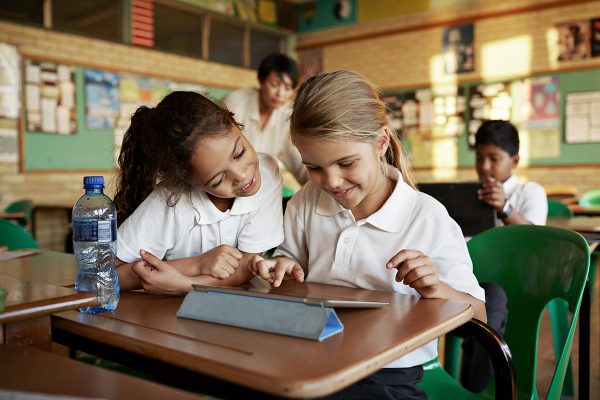The impact of screens in the classroom: myth or reality?
The use of screens in the classroom has generated intense debates about their benefits and risks. With recent restrictive measures in some regions, such as the regulation of the use of mobile devices in schools in Spain, a key question arises: Is this trend justified or does it respond to misperceptions? This article analyzes the myths and realities about screens in the classroom, highlighting the need for a critical and contextualized approach.
Common myths about screens in the classroom
One of the most widespread myths is that technology elites, such as those in Silicon Valley, choose to educate their children without screens, while the rest of the population adopts technology without reflection. However, these decisions are often conditioned by specific contexts. They do not represent a total rejection of technology, but a more selective and conscious use.
Another relevant case is Sweden, where the so-called “de-digitization” has generated headlines. But far from meaning an abandonment of technology, this stance seeks to re-evaluate its role in education. This underlines that it is not a matter of choosing between screens or books, but of integrating them in an effective and complementary way.
Digital divides and educational inequality
The COVID-19 pandemic exposed digital divides in areas such as access, knowledge and school resources. Although most Spanish households have access to the Internet, factors such as lack of teacher training and adequate pedagogical resources revealed profound inequalities. To address these gaps, European programs such as the Digital Education Action Plan 2021-2027 have worked to reduce them through funding and certification of digital competencies. In addition, initiatives such as Code School 4.0 are encouraging the teaching of computational thinking from an early age.
Criticism of the prohibitionist approach
Policies of total prohibition of devices in the classroom, often driven by social pressures, simplify a complex problem. Research suggests that these measures can generate negative effects, such as student anxiety or a deterioration of the school environment. In addition, it has been observed that technology, if used appropriately, can enrich learning strategies. Successful examples of technology integration, such as in Estonia, demonstrate how a well-planned approach can improve educational performance.

Critical integration of technology in the classroom
Studies such as the TPACK (Technological, Pedagogical and Content Knowledge) model show that the key to integrating screens in the classroom lies in teacher training. Teachers must be able to combine disciplinary knowledge with digital tools adapted to specific contexts and clear learning objectives. Therefore, technology should be seen as a complementary tool and not as an end in itself.
Conclusion: towards an educational balance
The discussion about screens in the classroom should not be reduced to dichotomies such as “screens versus books”. Instead, it is essential to adopt pedagogical strategies that take advantage of technological potential without replacing traditional methodologies. Critical and responsible training in the use of technology is indispensable to prepare students for the challenges of today’s world. By combining traditional approaches with digital tools in a balanced way, it is possible to enrich learning and foster key competencies for the 21st century.
Continue your professional education
The critical integration of screens in the classroom is key to meeting today’s educational challenges. Our Master in Education with a specialty in ICT in Education prepares professionals to address the impact of technology on teaching, developing skills to integrate digital tools effectively and thoughtfully. This approach will strengthen your ability to lead change in education, improving both your professional performance and student learning in the 21st century.
Source: The debate about screens in the classroom: myths and realities.

